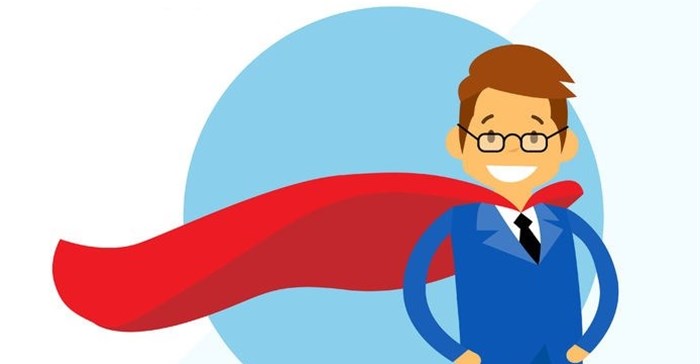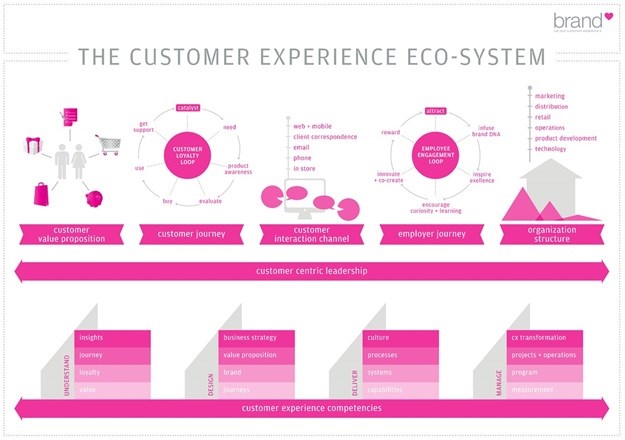Two days ago, a man extended his hand to me in a friendly gesture with the words "Hello Johan," and I instinctively knew I was in the presence of a superhero.
Although he was dressed casually and was smallish of frame, I could sense his contentment and his presence, not as the chairman of a board, but simply as a human being excited by life.
Before me stood Timothy S. Leatherman, the visionary behind and inventor and co-founder of one of my #lovebrands, the Leatherman Tool Group of Portland, Oregon.
After he answered many questions and told many stories, I now feel even closer to the tool I have put my trust in and staked my reputation on since I purchased my first Leatherman in 1998. And I cannot help but think about the following lyrics from the Five for Fighting song, Superman:
"I'm only a man in a silly red sheet/
Digging for kryptonite on this one-way street/
Only a man in a funny red sheet/
Looking for special things inside of me."
During our Customer Experience Design strategy sessions, we often ask our clients the question: ‘What problem does your product or service solve for your clients?’ A simple question, and one to which not even well-established businesses always know the answer.
So what problem does Leatherman really solve for its clients? Having a lot of tools accessible at once? Developing useful multi-tools?
No, Leatherman’s legacy is making its clients happy and enabling them to be the SUPERHERO of everyday problems!
But what does this mean in the context of a customer experience eco-system within a business, you may ask? How does that create customer brand loyalty?
I would like to explain some of the complex CX eco-system at the hand of my key take-aways and insights when applied to Leatherman as a case study.
All customer experience has to start with a service or a product being offered ̶ we can call this the customer value proposition. For Tim Leatherman, this started from a very personal need on a holiday road trip more then 40 years ago, which led to the design and development of a multitool over an eight-year period.
Customer value proposition take-aways
- Before developing a new service or product, first stand in the shoes of your consumers. Do they need, want or desire it? Would they develop it for themselves if they could?
- Be original and try solving old or new problems in innovative ways. Make sure it is your customers’ problems you are solving and not those of your business.
- Perseverance is a virtue.
- Make sure you get the value proposition right for the consumer only and do not make business choices and rush decisions to please the shareholders or the board.
- Persevere in your quality and delivery and do not compromise on that for higher profit margins.
- Ask yourself whether you are willing to put a 25-year guarantee on retaining your customers’ loyalty.
- Humility is key. Remember that the customer is the true hero and that any business is only digging for kryptonite on a one-way street. Consumers have multiple value-proposition choices and if they are not satisfied, or are treated with arrogance and disrespect, they will leave.
Customer journey take-aways
In a diverse and free economy there will always be a catalyst for any product or service. That is the good news!
The bad news, however, is that there will be competitors, and keeping your customers loyal to your brand is the only key to a growing and profitable business. Also, have a clear understanding that customers’ loyalty is not equal to keeping them hostage with empty promises and layer upon layer of bureaucratic red tape.
- Your product or service needs purpose. Does it solve both the promised and the emotive need of your customers? Does the multitool allow a screw to be tightened or does it make the user the superhero of everyday problems? Does your clothing store card allow for easy purchases or does it allow the user to fit in among his or her peers? Does the mobile phone allow you to make a call or does it give you status in a crowd?
- In the context of customer loyalty, Utility goes beyond the product just being able to do what it said it would do or be.
- You should ask how your product lets the user feel when he uses it. Does it make him happy, does he feel like being part of a tribe, will he run into the proverbial burning building to safe your product?
- Move away from a once-used-throw-away economy to an inheritance economy. Are the quality of and love for the product such that your client would pass it on to the next generation?
- The proof for a product or service is not in the using, but in the support. It is no secret that businesses promise the world to clients in their marketing and sales pitches, just to see the clients as a burden the moment they need support for their purchases.
- To my mind loyalty, is founded in the support you are willing to offer your clients for their money and effort. This is the moment of truth, when lifelong relationships are either built or loyalty destroyed forever.
- Don’t compromise to save a cent! How easy do you make the support journey for your clients? Are you willing to guarantee your product or service for 25 years without shame or blame?
- Reignite the loyalty loop.. Customer loyalty implies that the customer stays in the loyalty loop. A truly sustainable loop can only be created by means of two catalysts:
- Innovation without quality compromise. Businesses need to re-invent their products and services adding newly “needed” utilities. By needed I do not mean pseudo-features added for the purpose of distinguishing their products or services from those of competitors without adding new value, but rather features that will make the totality more desirable than the previous version, while still retaining the same quality.
- Loyalty loop referring where an existing loyal customer cannot help but become an ambassador for your product or service without the promise of reward or recognition other than feeling the need to let others in on your secret, to become the superhero of other people’s problems or just to be giving beyond oneself!
In summary, the more I postulate the clearer my understanding of the problem becomes. Is it at all possible to guarantee a customer experience, which at the very least maintains the consumer’s expectations for 25 years?
I think it is, and I even believe a brand can exceed customer expectations for 25 years and longer.
This is how:
- Both the brand and the consumer must have a clear understanding of the value exchange. The consumer should feel he is receiving fair value for his money and that your product or service should deliver, as a bare minimum, at least what it claims.
- Future-proof your product or service by precision engineering and production, high-quality materials and components and innovative and forward-thinking design.
So, while being Superman might not be that easy, being a Superbrand is!
*Note that Bizcommunity staff and management do not necessarily share the views of its contributors - the opinions and statements expressed herein are solely those of the author.*















































